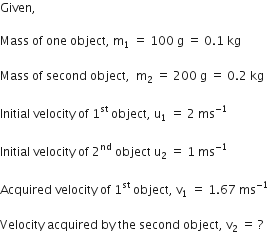Two objects of masses 100 g and 200 g are moving in along the same line and direction with velocities of 2 ms–1 and 1 ms–1, respectively. They collide and after the collision, the first object moves at a velocity of 1.67 ms–1. Determine the velocity of the second object?





